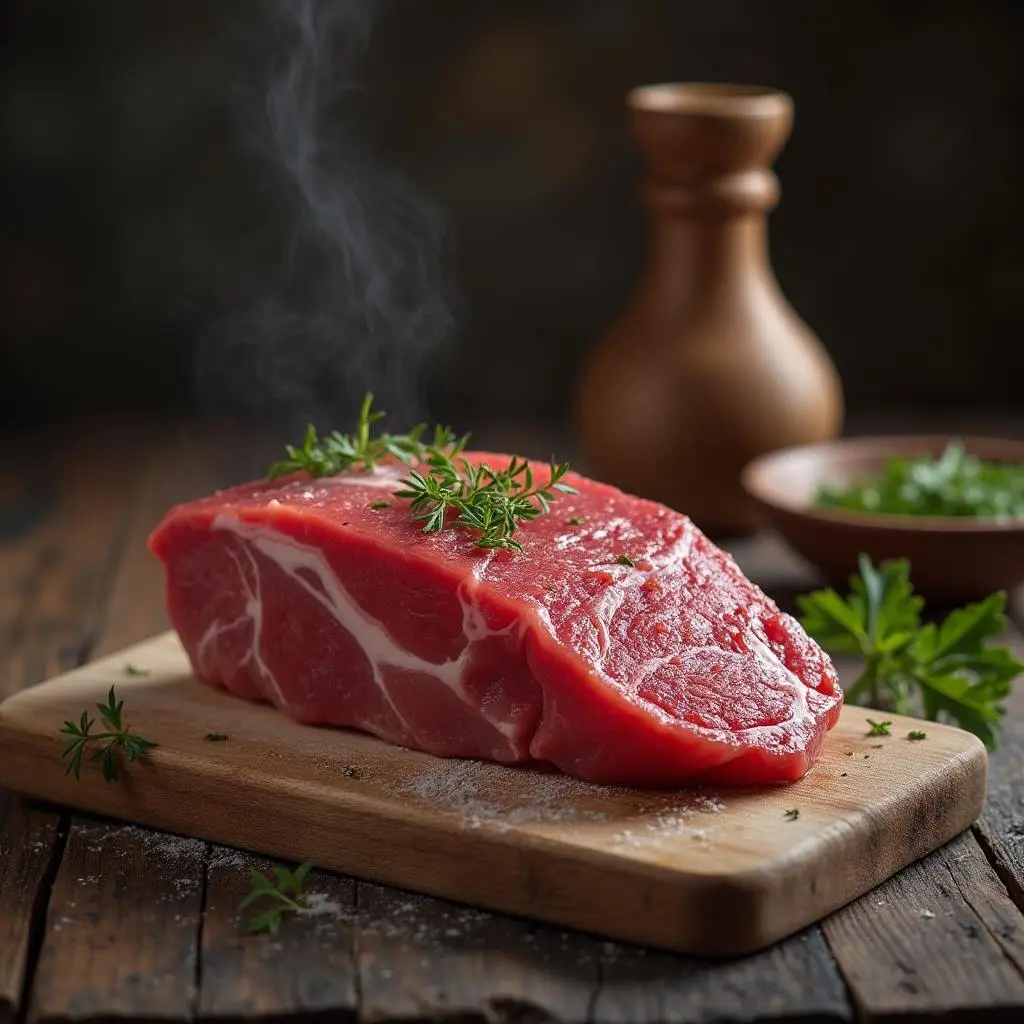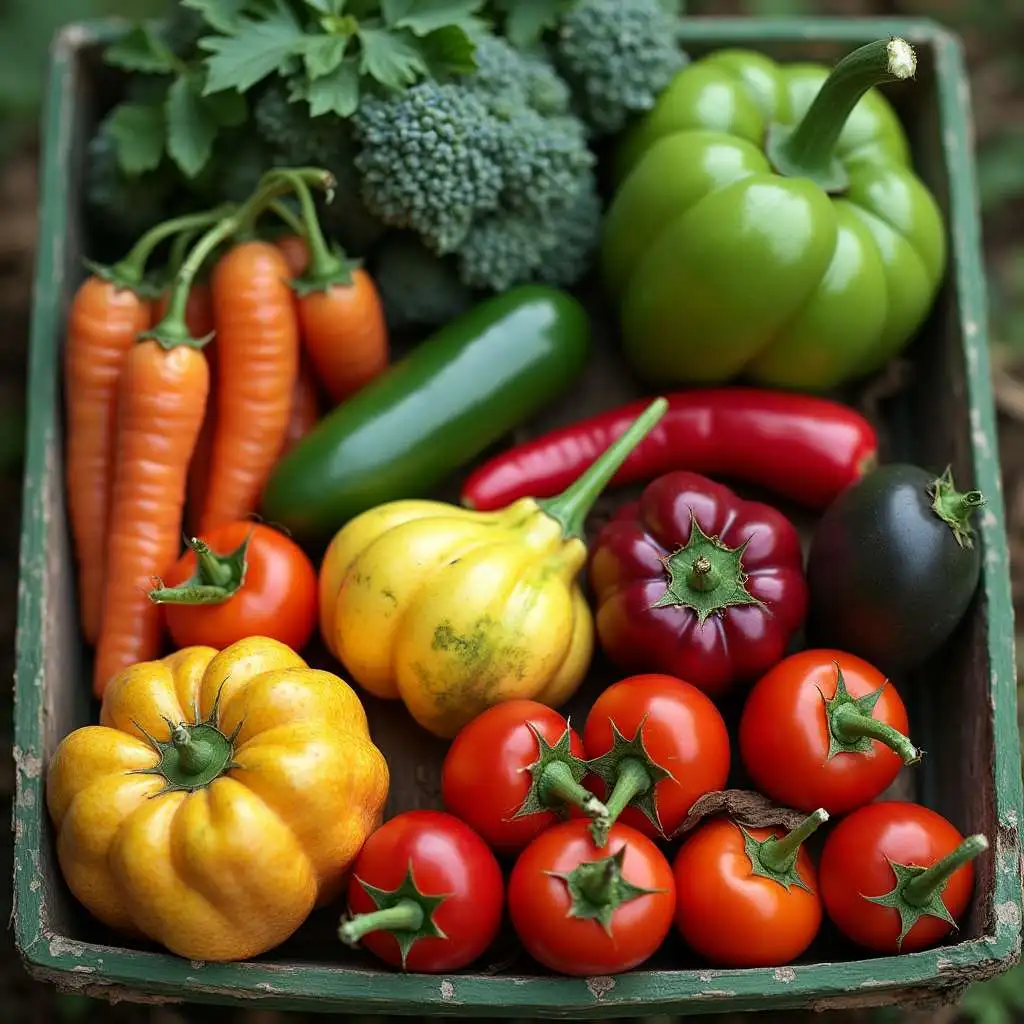5 Powerful Haitian Vegetables & Their Health Benefits
Introduction: The Comfort of Haitian Cuisine
Imagine stepping into a kitchen filled with the rich, earthy aromas of slow-cooked beef, vibrant vegetables, and bold, savory spices. The warmth of this dish is more than just in its temperature—it’s in the memories it evokes, the stories it tells, and the family bonds it strengthens. If you’ve ever tasted Haitian cuisine, you know it’s more than food; it’s an experience that connects you to a culture, a tradition, and a way of life.
In this guide, I’m going to take you through every step to make a comforting dish of Haitian vegetables with beef, from selecting the right ingredients to perfecting the cooking process. Whether you’re a novice cook or someone who’s familiar with Haitian food, this article will give you everything you need to bring the authentic flavors of Haiti to your home kitchen.
Table of Contents
What You Need to Know About Haitian Vegetables and Beef
Before diving into the recipe itself, let’s take a moment to understand the role of Haitian vegetables and beef in Haitian cuisine. Haitian cooking is renowned for its rich, complex flavors, often achieved through a combination of fresh, vibrant vegetables, and hearty meats.
In many Haitian households, vegetables play a central role in meals, adding both flavor and nutritional value. The combination of vegetables like carotte (carrots), pwa (beans), and gombo (okra) with beef creates a dish that is as satisfying as it is nutritious. This hearty meal is often enjoyed with rice or beans, making it a staple in Haitian homes.
Beef is often used in Haitian dishes, particularly in stews or one-pot meals, thanks to its ability to absorb the flavors of the seasonings and vegetables. It’s a popular choice for its richness and its capacity to complement the lighter, fresher vegetables typically found in Haitian cooking.
Essential Ingredients for Cooking Haitian Vegetables with Beef
To create this dish, you’ll need a handful of key ingredients. These aren’t just ingredients; they are the building blocks of an authentic Haitian flavor profile.
Here’s a quick breakdown of what you’ll need:
Table: Ingredients for Haitian Vegetables with Beef
| Ingredient | Quantity | Role in the Dish |
| Beef stew meat | 1 lb | Main protein, typically braised for flavor |
| Haitian seasoning mix | To taste | Flavor base for vegetables and beef |
| Carrots | 2 medium | Adds sweetness and texture |
| Green beans | 1 cup | Adds crunch and a burst of green flavor |
| Okra | 1/2 cup | It thickens the stew and provides a distinctive texture. |
| Onion | 1 medium | Provides savory depth to the dish |
| Garlic | 2 cloves | Enhances the overall flavor profile |
| Bell peppers | 1 medium | Adds sweetness and color |
| Tomatoes | 2 medium | Freshness and acidity for balance |
| Fresh thyme | 2 sprigs | Adds earthy flavor, essential in Haitian cooking |
| Scotch bonnet pepper | 1 (optional) | Adds spice and heat (adjust to taste) |
Step-by-Step Guide to Cooking Haitian Vegetables with Beef


Now that you’re familiar with the ingredients, it’s time to dive into the step-by-step process of creating this flavorful dish. Follow these simple instructions to prepare an authentic Haitian meal that will leave your taste buds dancing.
Step 1: Prepare the Beef
The beef is the star of the show, and how you prepare it sets the tone for the dish. First, cut the beef into bite-sized cubes. You’ll want to use stew meat or any cut that’s perfect for braising. The beef should be tender, succulent, and bursting with flavor.
Next, season the beef generously with salt, pepper, and a Haitian seasoning mix (also known as epis). This seasoning is crucial for achieving that authentic taste. Allow the beef to marinate for a minimum of 30 minutes. If you have time, marinate it for a few hours or overnight for a deeper flavor.
Once your beef is marinated, heat a bit of oil in a large pot over medium-high heat. Sear the beef cubes in the hot pot until they’re browned on all sides. This step locks in the juices, ensuring the beef remains tender throughout the cooking process.
Step 2: Sauté Vegetables and Aromatics
After your beef is seared, it’s time to add the vegetables and aromatics that will make this dish pop. In the same pot, sauté chopped onions, garlic, and bell peppers until softened and aromatic. This process releases all the savory goodness from these ingredients.
Add the scotch bonnet pepper (if you like a bit of heat), and sauté briefly. This pepper is a cornerstone of Haitian cuisine, offering a unique level of spiciness and flavor. If you prefer less heat, feel free to remove the seeds or omit the pepper altogether.
Next, stir in chopped tomatoes. These will provide freshness and acidity, balancing the richness of the beef and adding a lovely depth of flavor. Continue cooking for about 5 minutes until the tomatoes break down and become soft.
Now it’s time to add the vegetables. Toss in your carrots, green beans, and okra. These vegetables bring texture and color to the dish. You’ll want to sauté them for about 5 minutes, allowing them to absorb the flavors from the onions, garlic, and tomatoes.
Step 3: Add Water and Simmer
Once your vegetables are sautéed, it’s time to add liquid to the pot. Add sufficient water to submerge the beef and vegetables. Bring the pot to a boil, and then reduce the heat to low.Bring the pot to a boil, then lower the heat to the lowest setting. This simmering process is key—it allows all the flavors to meld together and for the beef to become tender.
Add a couple of sprigs of fresh thyme to the pot. This herb adds an earthy note that’s essential to the flavor profile of Haitian cuisine.
Let everything simmer for 45 minutes to 1 hour, stirring occasionally. The beef should become tender, and the vegetables should soften but still hold their shape. The broth will also thicken slightly, giving you a savory stew-like consistency.
Step 4: Adjust Seasoning and Serve
After your stew has simmered to perfection, it’s time to taste it. Check for seasoning and adjust if needed, adding more salt, pepper, or even a splash of hot sauce if you like it spicier.
When the seasoning is just right, it’s ready to serve! Pair your Haitian vegetables with beef with a side of diri (rice) or diri ak pwa (rice and beans) to complete the meal. The rice will soak up the delicious broth, making every bite a comforting experience.
نصائح لإتقان تحضير الخضراوات الهايتية مع اللحم البقري
While the recipe itself is relatively straightforward, there are a few tips that will help you elevate the dish to its full potential.
- Slow Cooking: Allow the beef to cook slowly. This is key for achieving that melt-in-your-mouth tenderness. Don’t rush the process; the longer the beef simmers, the more flavorful it will become.
- Marinating the Beef: Don’t skip the marinating step. The seasoning mix is essential for infusing the beef with authentic Haitian flavors, and giving it time to marinate will really enhance the taste.
- Vegetable Variations: Feel free to get creative with your vegetable selection. Depending on what’s in season, you could swap out carrots for sweet potatoes, or try adding eggplant for a different texture.
- Balance the Heat: Haitian food can be spicy, but it’s all about finding the right balance. Start with one scotch bonnet pepper, and taste as you go. Sure! Please provide the sentence you’d like me to rephrase.
Frequently Asked Questions (FAQ)
1. What are traditional Haitian vegetables used in cooking?
Haitian dishes commonly include vegetables like carrots, okra, cabbage, eggplant, and various beans. These vegetables add flavor, texture, and color to the dish, making each meal a beautiful and balanced experience.
2. Can I use a different meat instead of beef for this dish?
Yes! While beef is traditional in this recipe, you can substitute it with chicken or pork. Both meats work well in this dish, though they will alter the flavor slightly. Chicken, for example, has a milder taste compared to the richness of beef.
3. How can I make this dish spicier?
If you love spice, feel free to increase the number of scotch bonnet peppers. You can also add a few dashes of hot sauce or sprinkle in some cayenne pepper for an extra kick.
4. Can I freeze Haitian vegetables with beef?
Absolutely! This dish freezes very well. Just allow it to cool completely before transferring it to an airtight container. It will last up to 3 months in the freezer, and you can reheat it on the stove when you’re ready to serve.
Conclusion: Savoring Haitian Flavors at Home
Cooking Haitian vegetables with beef at home is a delightful way to explore the flavors of Haitian cuisine. The combination of tender beef, vibrant vegetables, and bold spices creates a meal that’s not only delicious but also steeped in cultural tradition. By following this step-by-step guide, you’ll be able to recreate the comforting warmth of Haitian home-cooked meals in your own kitchen.
Now that you know how to make this dish, it’s time to roll up your sleeves and start cooking. Whether it’s for a family meal or a special occasion, this recipe will surely become a staple in your kitchen.
Enjoy the flavors, share with loved ones, and experience the heart of Haitian cuisine in your home!
Call to Action: Share Your Haitian Cooking Experience!
Have you tried making Haitian vegetables with beef? Share your experience in the comments below, or tag us on social media with your photos! We’d love to hear how you added your personal twist to the dish. Happy cooking!

